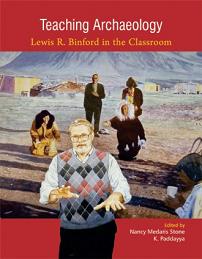 Nouvelles parutions hors SPF
Nouvelles parutions hors SPF 

 |
[Histoire de l'archéologie] Nancy Medaris Stone & Katragadda Paddayya (2020) - Teaching Archaeology: Lewis R. Binford in the Classroom, New Delhi, Aryan Books International, 332 p. EAN 9788173056406, 64,00 €. Beginning in the 1960s, the influential archaeologist Lewis R. Binford challenged a field whose explanatory framework for interpreting the archaeological record was, he wrote, “by convention a simple reflection of the social identity of the creators” of that record. He responded to that inflexible perspective by committing himself to the development of a methodology that would result in a much more robust and secure understanding of the dynamic factors that produced the static archaeological record. Over the course of a lifetime dedicated to personal learning, he did ethnographic fieldwork with hunters and gatherers in the Arctic, the Kalahari Desert, and the Australian outback, studied large-scale environmental and ecological processes, and, at the much smaller scale of the human individual, observed how such things as physical constraints on movement conditioned archaeological site structure. In ten books and numerous scholarly articles Binford discussed the evolution of his ideas and their effect on the trajectory of his research. Two of his monographs, Nunamiut Ethnoarchaeology (1978) and Bones, Ancient Men and Modern Myths (1981) are foundational studies of research undertaken to securely link the statics of the archaeological record to the dynamic conditions that produced them. Working at Archaeology (1983) and Debating Archaeology (1989) contain numerous journal articles, written between 1968 and 1988, which became widely used by his contemporaries in their teaching and research. The thirty-seven lectures in Teaching Archaeology comprise his course, Strategies of Archaeology, presented during the 1982 fall semester at the University of New Mexico. They reflect his numerous concerns, progressing from a discussion of the nature of the archaeological record and the intellectual tools required to decode it, to how to operationalize the archaeological record to evaluate theories. Binford balances the abstract segments of his presentations with abundant historical and contemporary examples of attempts to explain the meaning of the in-ground remnants from the past. He continued to teach and do research for more than twenty years, during which the strategies outlined in these lectures became an essential part of method and theory in contemporary archaeology. Three of his papers, previously published in India and included here as Appendices, fully complement the topics dealt with in the lectures. |


